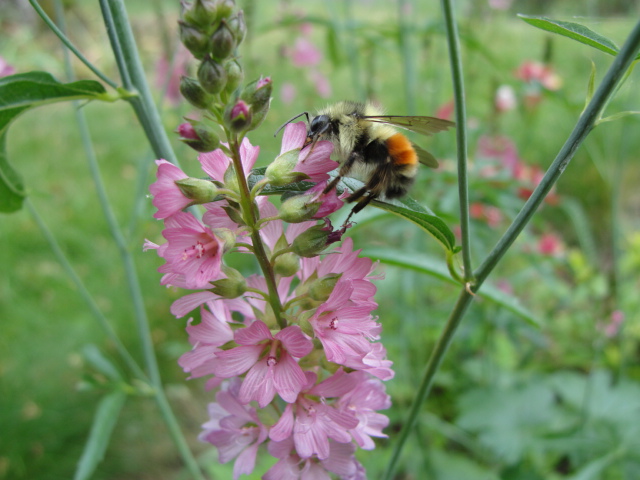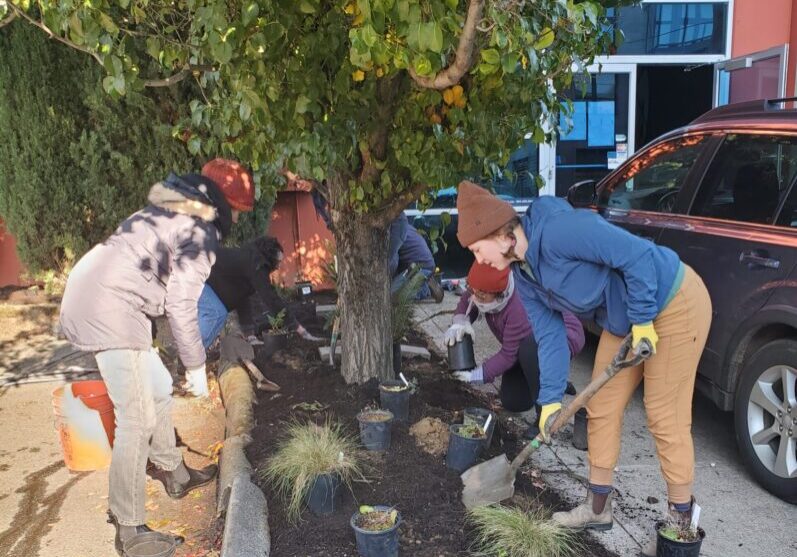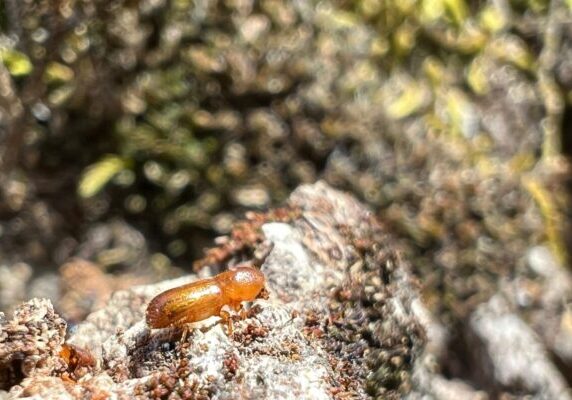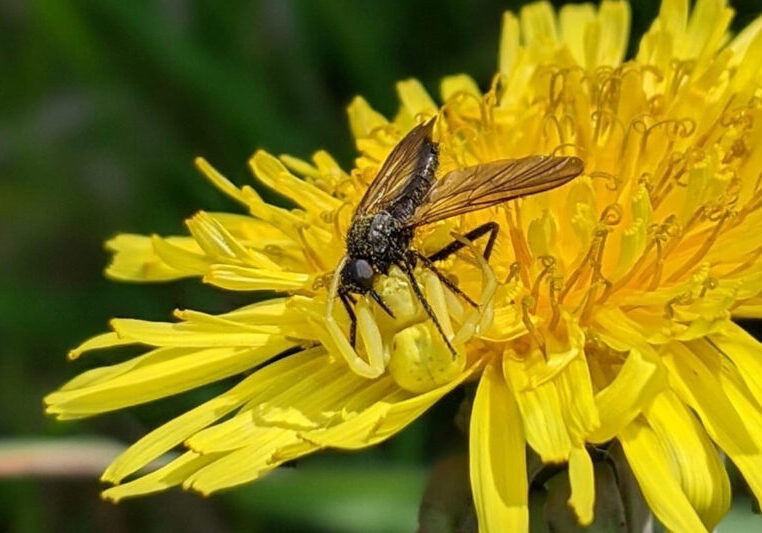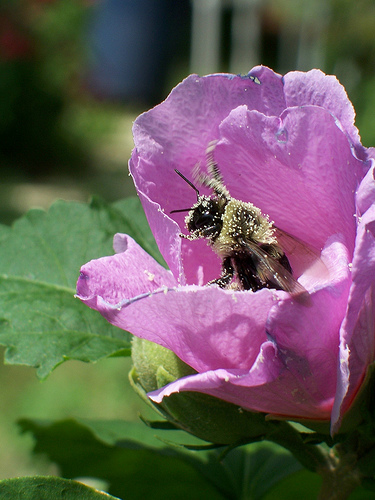
Pollinator populations, which include a wide variety of insects, such as butterflies, beetles, and bees, and some birds and bats, have severely dropped over the past few decades. Because these species are necessary for the reproduction of over 70% of the world’s flowering plants, including two thirds of the world’s edible and industrial crops, it is vital that efforts are made to conserve them. Disease, widespread pesticide use, loss of nesting habitat, and the loss of native plant food sources are the primary factors contributing to the decline. Farmers have used European honey bees to replace native pollinators, but Colony Collapse Disorder significantly reduced honey bee populations as well.
Whether you have a small urban lot, several acres of woodland, or agricultural property, you can help pollinators simply by going native! We are engaged in pollinator projects throughout the district, including native hedgerow and garden installations, and we would love your help to expand native pollinator habitat. Hedgerows containing native shrubs, forbs, grasses, and bare ground for nesting habitat act as pollinator havens among crop fields or adjacent to woodlands. Ideally, hedgerows are comprised of native plants that bloom at different times of year to provide a steady food supply for pollinators throughout the growing season.
Our Pollinator Plants and Bloom Periods chart is a great resource for choosing your plants. Native bees tend to be solitary and nest in dead and decaying stumps and in the ground so leaving such areas in the design are important. For the first couple of years, landowners will need to be diligent with weed control, but once established, the hedgerow or garden requires little to no maintenance.
Those with small parcels of urban land can greatly benefit pollinators just by putting in a few native plants. The plants will provide food and shelter for non-migratory native bees and for those pollinators that make long journeys, such as butterflies and hummingbirds. With the proper food and shelter, these species will find their way to farms, forests, gardens, and wherever native plants are located.
You might also be interested in removing your lawn or a portion of your lawn and replacing it with native bunch grasses and wildflowers that are suited to the Willamette Valley and need less fertilizer and water. As homeowners become more aware of the environmental impacts of their landscape choices, naturescaping programs are receiving more requests for lawn replacement options. Although common, lawns provide little benefit to storm water infiltrationInfiltration Water absorbs into the ground instead of running over the surface, water quality, or wildlife habitat, and require polluting inputs such as fertilizers and mowing. Pacific Northwest Urban Meadowscaping (PNUM), a collaborative effort to develop lawn alternatives, has published The Meadowscaping Handbook to guide you in replacing your lawn. Click here to order a print copy of The Meadowscaping Handbook.
“Pollinator Syndromes” describe flower characteristics, or traits, that may appeal to a particular type of pollinator. Such characteristics can be used to predict the type of pollinator that will aid the flower in successful reproduction. A combination of color, odor, quantity of nectar, location and type of pollen, and flower structure can each affect a potential pollinator’s ability to locate a flower and its food resources.
